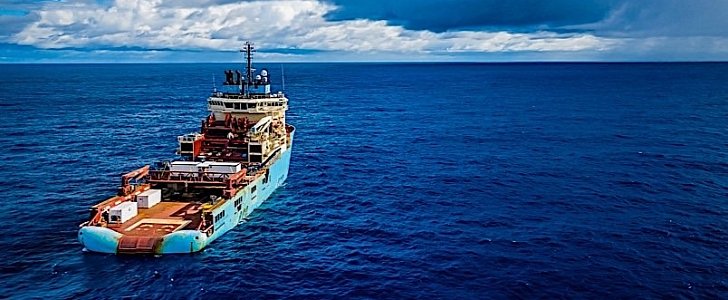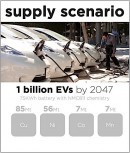When it comes to the raw materials needed to make EV batteries, car companies are now moving in to secure themselves easy and cheap access to them.
The key materials used by the industry to make batteries are lithium, nickel and cobalt. The demand for these is so great that predictions show we could soon face a shortage, not because we don’t have plenty, but because simply we don’t yet have the extraction capacity to meet the high demand, which is expected to grow 11 times by the year 2050.
The prediction comes as part of a year-long study commissioned by polymetallic nodules exploration company DeepGreen, whose results were published this week. Titled Where Should Metals for the Green Transition Come From, the study tries to envision a future when raw materials supply would be aplenty, and the extraction processes greener than they currently are.
DeepGreen says there are two main areas from where these materials can come from: ores mined from the land (that presently represents the bulk of the global stockpile) and polymetallic nodules collected from the deep seafloor of the Pacific Ocean.
Going for undersea mining should have a great environmental effect, the study shows. It predicts there will be 70 percent less direct CO2 emissions, 90 percent less SOx and NOx emissions, and 94 percent less stored carbon risk, compared to land mining.
Add to that the fact that there will be no solid waste resulting from such mining operations (at least not visible on the surface), and the ocean floor just might be the next battery materials El Dorado.
“Ocean nodules are a unique resource to consider at a time when society urgently needs a good solution for supplying new virgin metals for the green transition,” said in a statement Gerard Barron, DeepGreen CEO.
"Extraction of virgin metals—from any source—is by definition not sustainable and generates environmental damage. It’s our responsibility to understand the benefits — as well as the damages associated with sourcing base metals from nodules.”
The DeepGreen study, complete with environmental, social and economic costs of such a move are available in full in the PDF attached below.
The prediction comes as part of a year-long study commissioned by polymetallic nodules exploration company DeepGreen, whose results were published this week. Titled Where Should Metals for the Green Transition Come From, the study tries to envision a future when raw materials supply would be aplenty, and the extraction processes greener than they currently are.
DeepGreen says there are two main areas from where these materials can come from: ores mined from the land (that presently represents the bulk of the global stockpile) and polymetallic nodules collected from the deep seafloor of the Pacific Ocean.
Going for undersea mining should have a great environmental effect, the study shows. It predicts there will be 70 percent less direct CO2 emissions, 90 percent less SOx and NOx emissions, and 94 percent less stored carbon risk, compared to land mining.
Add to that the fact that there will be no solid waste resulting from such mining operations (at least not visible on the surface), and the ocean floor just might be the next battery materials El Dorado.
“Ocean nodules are a unique resource to consider at a time when society urgently needs a good solution for supplying new virgin metals for the green transition,” said in a statement Gerard Barron, DeepGreen CEO.
"Extraction of virgin metals—from any source—is by definition not sustainable and generates environmental damage. It’s our responsibility to understand the benefits — as well as the damages associated with sourcing base metals from nodules.”
The DeepGreen study, complete with environmental, social and economic costs of such a move are available in full in the PDF attached below.






